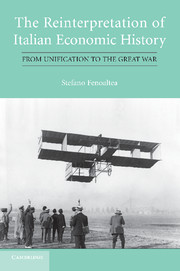Book contents
- Frontmatter
- Contents
- List of Tables
- List of Figures
- Acknowledgments
- Preface
- Introduction
- 1 The Time Series and the Interpretations
- 1A The Measurement of Production Movements
- 2 The Investment Cycle
- 3 The Consumption Cycle and the “Crisis” of the 1880s
- 4 Protection and Migration
- 5 Railways
- 6 North and South
- 6A North and South: A Sectoral Analysis
- 7 The State of Play
- APPENDICES: TARIFFS, TRADE, MIGRATION, AND GROWTH
- References
- Index
3 - The Consumption Cycle and the “Crisis” of the 1880s
Published online by Cambridge University Press: 05 March 2012
- Frontmatter
- Contents
- List of Tables
- List of Figures
- Acknowledgments
- Preface
- Introduction
- 1 The Time Series and the Interpretations
- 1A The Measurement of Production Movements
- 2 The Investment Cycle
- 3 The Consumption Cycle and the “Crisis” of the 1880s
- 4 Protection and Migration
- 5 Railways
- 6 North and South
- 6A North and South: A Sectoral Analysis
- 7 The State of Play
- APPENDICES: TARIFFS, TRADE, MIGRATION, AND GROWTH
- References
- Index
Summary
Conditions in the 1880s
The fluctuations in industrial production, and in investment, have been interpreted in different ways; but on the “stylized” facts themselves, on the time paths of the corresponding variables, there has long been relatively general agreement. There has been no agreement, however, even on the time paths of agricultural production and of consumption, and, with these, of the aggregate economy.
The controversy specifically concerns the 1880s, and stems from the weakness of the agricultural statistics of the time. The quantitative evidence improved only slowly, but the later years are in any case clearly characterized by the crisis of the early 1890s, and then by the growing prosperity of the Giolitti years; both were clearly general, and involved consumption as well as investment, agriculture as well as industry. The 1860s and '70s are less transparent; for the old believers the rapid growth of agricultural production allowed Romeo's “original accumulation,” but the orthodox opinion has long been that over those decades the changes in the real economy, for good or ill, were relatively mild. The 1880s appear marked instead by strong but heterogeneous movements, with progress in industry but a crisis in at least a good part of agriculture. The path of the aggregate economy depends on these sectors' relative weight; it is not self-evident, and has been evaluated in very different ways.
Over the 1880s, two major external developments impinged on the Italian economy.
- Type
- Chapter
- Information
- The Reinterpretation of Italian Economic HistoryFrom Unification to the Great War, pp. 109 - 134Publisher: Cambridge University PressPrint publication year: 2011

